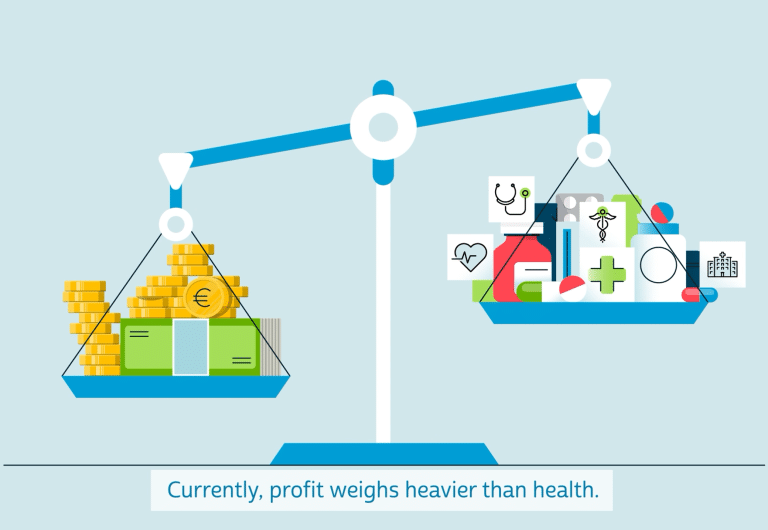With changing lifestyles and ageing population, chronic diseases have become increasingly common. Bearing this in mind, it has been predicted that by the year 2030, there will be a demand for 40 million new jobs in healthcare worldwide, most of these in high-income countries. In this same period, the shortage of health workforce in low-income countries will have grown to 18 million. These numbers are clear and point to the same conclusion: now, more than ever, we need a global strategy to tackle this unequal distribution. Wemos is glad that all member states of the World Health Organization (WHO) have adopted the five-year plan ‘Health Employment and Economic Growth’ at the recent World Health Assembly in Geneva.
In Geneva, member states’ response to the plan was overwhelming. New Zealand even concluded its speech by saying, ‘We cannot allow this plan to fail.’ This urgency therefore calls for the next necessary steps. The WHO, International Labour Organization (ILO), and the Organization for Economic Co-operation and Development (OECD) are working together on executing the plan.
Secure sufficient money
First, money is needed to train health personnel and, subsequently, for jobs. Many low-income countries lack the necessary funds. While ministries of health usually have a fairly good idea of what is needed in terms of health personnel, the budget negotiations with the ministry of finance often are not successful. This is because health workforce is seen as a recurring cost. To counter this, the WHO, ILO and OECD have come up with evidence that new jobs in the health care sector stimulate economic growth. Zambia and Zimbabwe have chosen an original approach to get approval from their ministers of finance for additional health budget: they present it as an ‘investment case’. But this is not always a formula for success.
The WHO has drafted guidelines to determine the necessary number of health workers to guarantee universal access to health services. While it takes health needs as a starting point, in its approach towards the labour market it looks into supply and demand, and is guided by a country’s financial capacity to pay for health workforce. This approach has a downside, because this means that when a country has insufficient financial means, it cannot meet its health workforce demand. This is why Wemos rather advocates a human rights approach: everyone – worldwide – has the right to access to the preconditions to health.
Cut restrictions
Next to sufficient national funds, international co-financing for schools and jobs is indispensable. The issue with this is that in the past the IMF and the World Bank have restricted their health financing to certain limits as a condition for their loans. Although these limits are now called ‘recommendations’, ministers of finance remain too stringent and prefer to spare their financial efforts. In Geneva, countries like Zambia, Zimbabwe and Botswana made it clear that there is a shortage of fiscal and budget space. Due to this shortage, little to no money is allowed to be expended to health workforce, and recently graduated health personnel are left unemployed because there are no vacancies. Also, salaries in the public sector are (temporarily) ‘frozen’ and working conditions are far from ideal. A recent example as a reminder: we have seen this in the EU Member States during the financial and economic crisis. And since budgets are increasing again, the number of vacancies has sky-rocketed (amongst other countries) in the Netherlands.
Keep providing support
International donors who, until recently, invested in health workforce for instance via salaries or top-ups, now hardly do this anymore or at all because they do not want to finance recurring costs. The underlying gist is that spending money for more health workforce would not be a sustainable solution. Colleagues from low- and middle-income countries tell us that support for this is lacking. This is why Wemos encourages high-income countries to keep providing financial support to countries that need it the most. In an interconnected world, this is not just an optional commitment: the very right to health obliges us to do so.
Invest in education
Investments are needed from high-income countries, too. The restricted budget and subpar working conditions are a breeding ground for the migration of health workforce, which is another factor undermining health systems. The prospect of thousands of vacancies in high-income countries is a huge red flag. To prevent a disastrous ‘pull’ effect on health personnel in low-income countries, it is necessary for high-income countries to take a closer look at themselves and invest more in health education and training. The ‘WHO Global Code of Practice on the International Recruitment of Health Personnel’ is definitely still relevant in this light, and that is why Wemos will continue stimulating its implementation with partner organizations.
Work intersectorally
According to ILO, health workers must be able to come together so that they can collectively advocate good working conditions. What happened earlier this year with Kenyan doctors is unacceptable: those who work in the health sector and express their opinion, should not be put in jail. The ILO also advocates an intersectoral approach. Ministers of health therefore must talk with those of education, employment and finance to collectively reach good agreements. This is exactly what Wemos has made a case for during the past years: we gathered different ministries, unions, civil society organizations and employers in the healthcare sector to discuss financing, education and working conditions in health. Encouraged by our newest insights from Geneva, we will continue doing this together with our partners in the Health Systems Advocacy Partnership.
Read Mariëlle Bemelman’s and Mit Philips’ (MSF) blog about the plan in the journal BMJ




